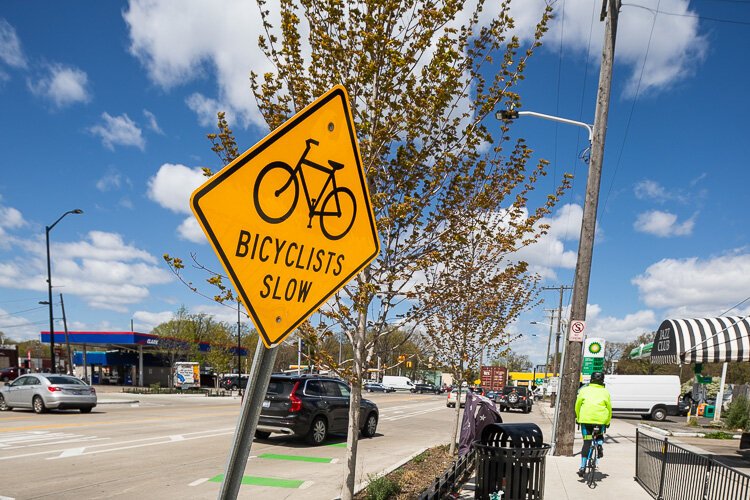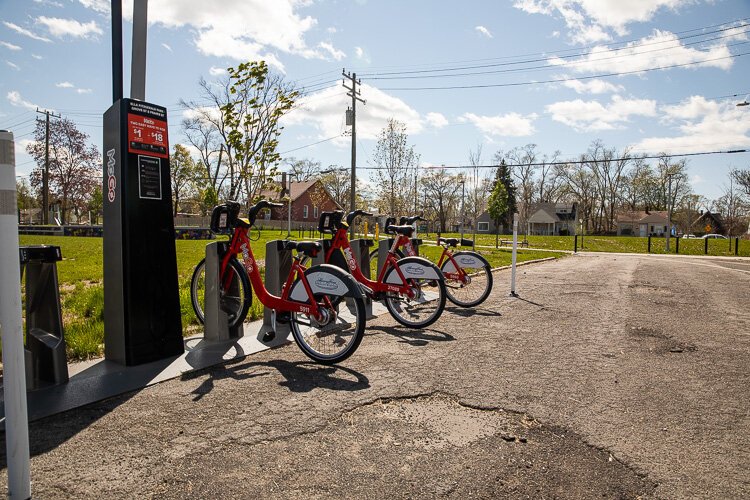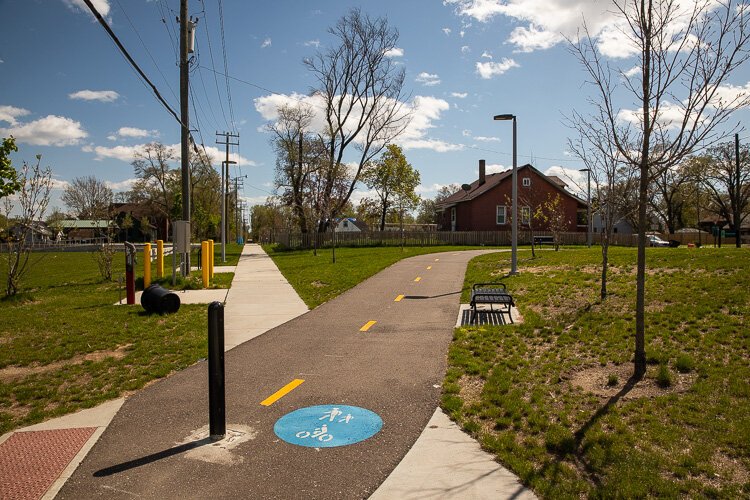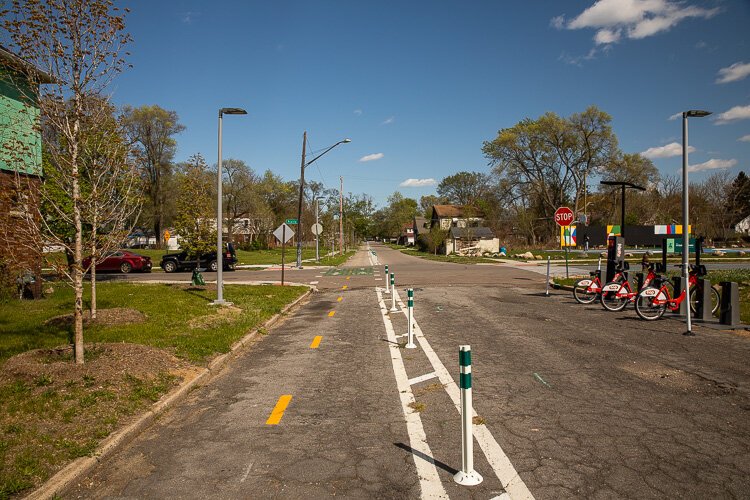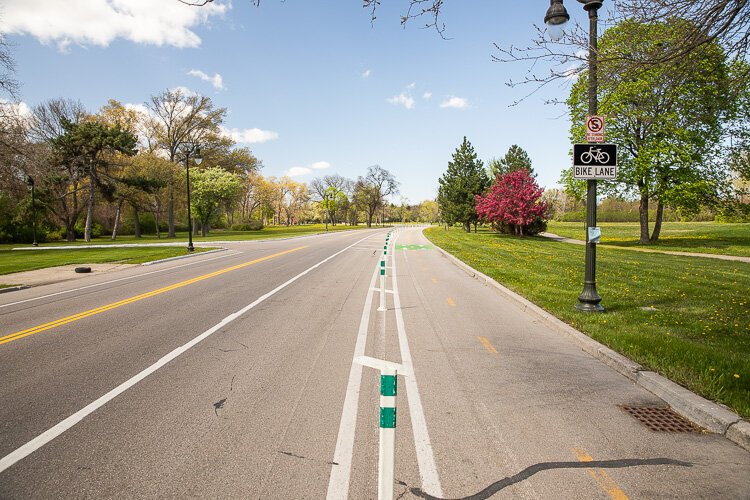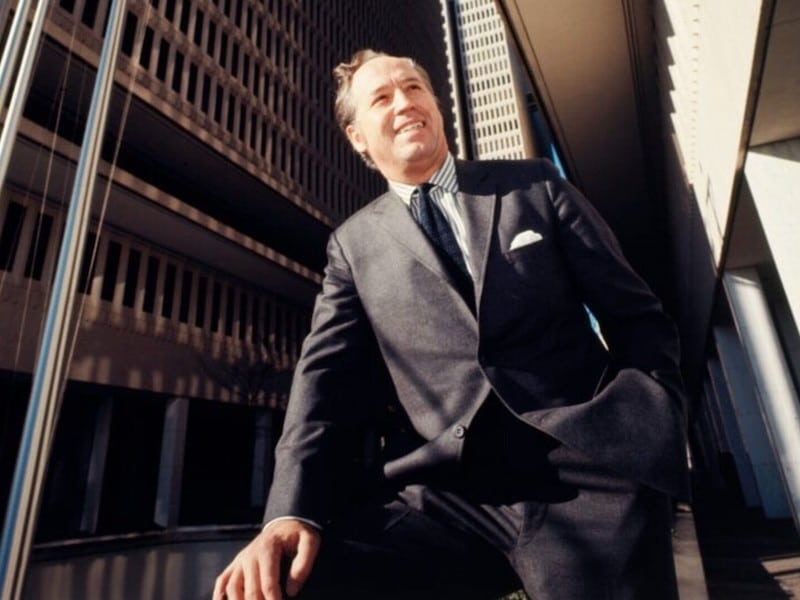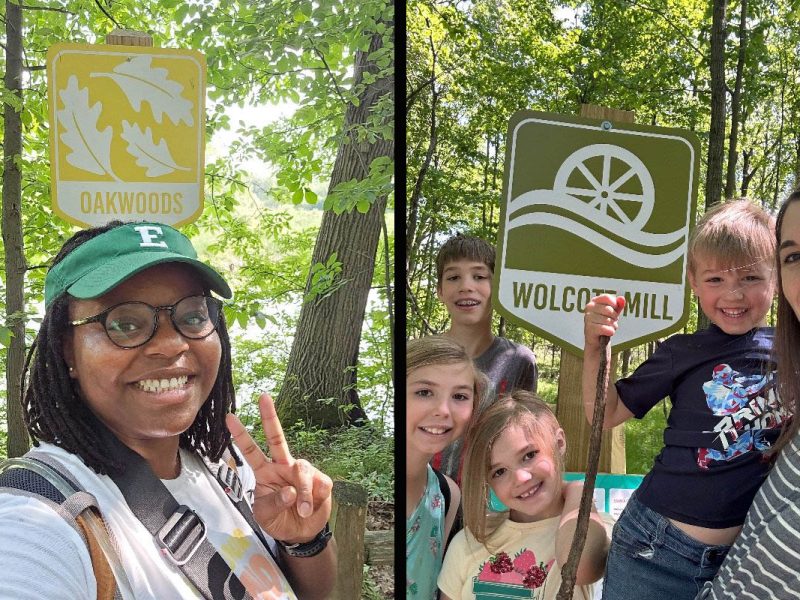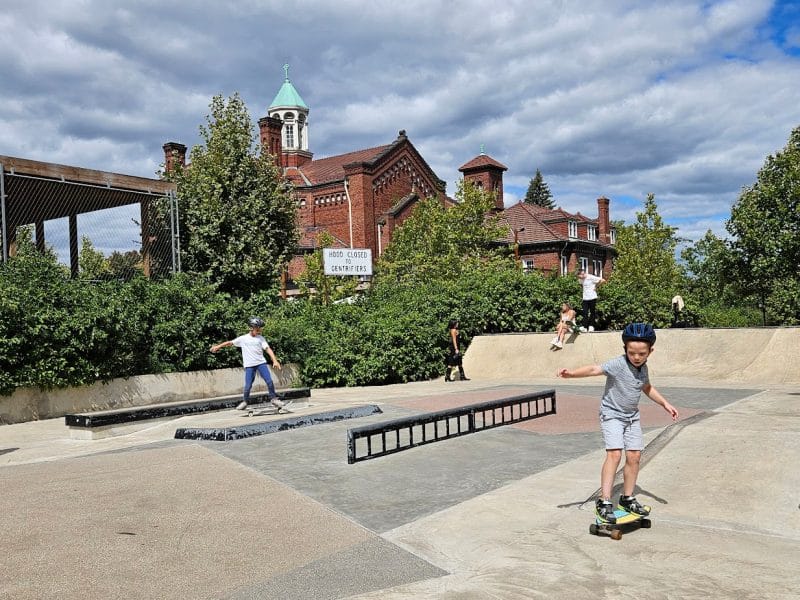Metro Detroit’s bike infrastructure is growing. Here’s how.
For Markita Moore, bicycling around during the pandemic has taken some getting used to. But the challenges of COVID-19 haven't stopped her from taking her LeMond Versailles road bike out for a spin whenever she gets the chance.
For Markita Moore, bicycling around during the pandemic has taken some getting used to. But the challenges of COVID-19 haven’t stopped her from taking her LeMond Versailles road bike out for a spin whenever she gets the chance.
Moore, a local musician and educator at Cass Tech in Detroit, has a passion for bike riding. She clocks in from one hundred to two hundred miles a week when the weather permits, and when it’s nice out even more than that. In addition to cycling on her own, Moore is also a member of the Metro 313 Cyclones, a Detroit-based cycling club that sponsors regular group rides.
She joined the Cyclones last spring around the time the pandemic started becoming an issue in Southeast Michigan. These days her club follows strict COVID-19 precautions including temperature checks when members go out on rides, but at the beginning of the pandemic, everything was a little confusing.

“It was kind of odd at first, because nobody was sure what to do about wearing masks,” says Moore. “How do we mask and distance and bike 30-40-50 miles together? But it worked itself out and we never had any [COVID-19] cases.”
Perhaps her most frustrating pandemic experience came during a 100-mile-trip to Lexington, Michigan last June, when she needed to use a bathroom but couldn’t due to COVID restrictions.If anything, though, Moore has actually been biking more now than before the pandemic. And she bikes all around Southeast Michigan, usually starting off from her home in Royal Oak Charter Township near the 8 Mile Border with Detroit.
In terms of bike infrastructure, Moore is a big fan of Ferndale’s lanes, which she says are kept relatively free from debris. Although Detroit is a frequent destination for her too, Moore usually avoids the bike lanes there, since she prefers to bike at fast pace and has concerns about the possibility of broken glass and inattentive pedestrians on them.
That said, she’s really excited about Detroit’s plans to build the Joe Louis Greenway, a 27.5-mile non-motorized trail that’s specifically being designed to provide a safer traveling experience for bicyclists and pedestrians.
Beyond that, Moore is very supportive of recent efforts to make Southeast Michigan a safer and more convenient place for people to ride bikes.
“I love bicycling and I think that as cities take steps to improve their infrastructure and make it safer for people to bike, then I think more people will,” she says.
Listening and learning
Looking at recent developments in Detroit’s bike infrastructure, it’s not a stretch to say that Detroit has really reinvented its relationship with bicycles over the last decade. In 2012, there were only about 55 miles of bike trails in Motor City. Today that number has increased to a head-turning 255 miles.
The spread of bike lanes across Detroit hasn’t taken place without some hiccups, however. There has been pushback over the city’s implementation of lanes from some residents. But motor vehicles are expensive to own and maintain, and not everyone is able or interested in driving one around. Recognizing this situation, Caitlin Marcon, deputy director of Complete Streets for Detroit’s Department of Public Works (DPW) says city officials remain committed to making transportation options like bikes, buses, and pedestrian travel viable for residents and others who use Detroit’s streets. And for bikes, in particular, this has meant taking steps to make that form of travel safer and more accessible.
“Detroit consistently ranks in the top 10 for big cities for car-on-bicycle fatalities,” says Malloy-Marcon, “and so we’re trying to change that trend and trying to offer a safe space for those who need to get around on bike or want to get around by bike to be able to do so.”
While her department is certainly trying to keep up with the latest in bike infrastructure, it’s also listening to community input about how bike lanes are implemented.
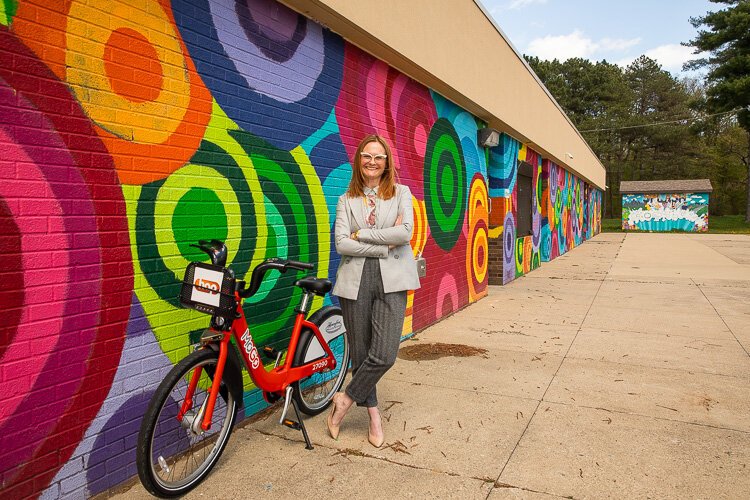
“We are constantly learning in terms of the design of what works and what makes people the most comfortable, whether they’re on a bike or in a car,” says Malloy-Marcon. “We’re trying to make our facilities as safe and as easy and user-friendly as possible.”
A great example of how Detroit’s efforts to be more flexible with its bike infrastructure is the new two-way cycle track on Spinoza Drive through Rouge Park, which runs from Sawyer Avenue to Rouge Park Drive. Completed last summer, it features bike lanes going in both directions, next to one another, on one side of the road, and is protected from motor vehicles with bollards.
DPW built its first two-way cycle track on Pontchartrain Boulevard at Palmer Park. It makes use of them in constrained situations where there isn’t a lot of room on the road. There are more in the works too.
Right now, DPW is in the process of building new side-by-side bike lanes on Kercheval Avenue between Mt. Elliott Street and St. Jean Street and a section of McNichols Road between Wyoming Avenue and Livernois Avenue. The Kercheval project will feature a two-way cycle track on the north side of the street, parking on both sides, and a single travel lane for motor vehicles in each direction.
On McNichols Road, there will be a two-cycle track on the north side of the street, parking on the north side, and a single lane for motor vehicle traffic in both directions. Work on both of those projects is expected to be completed this summer.
Two-way tracks aren’t the only innovative bike infrastructure the city has been implementing in Detroit, though. Last year, DPW wrapped up work on the Livernois Streetscape Project, which was focused on transforming a section of Livernois Avenue between Clarita Street and Eight Mile Road into an attractive, walkable streetscape. In addition to adding a new dedicated left-turn lane and wider sidewalks for cafe seating, it’s notable for bringing the city’s first sidewalk level bike lanes to the popular avenue.
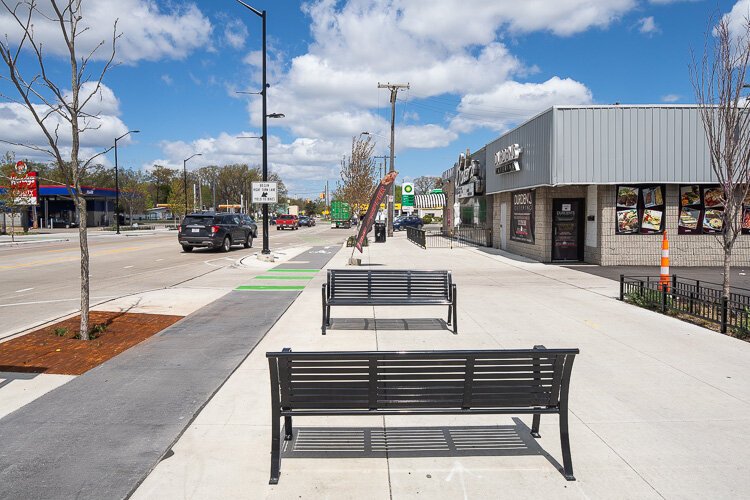
In 2020, the city also completed the construction of Detroit’s first-ever shared street on two block’s of Bagley between I-75 and 24th Street in Mexicantown. The area is now an unmarked, curbless, two-lane street with brick pavers on each side to indicate parking for motor vehicles and different colored pavers used to designate street-level sidewalks.
Looking forward, the city is now getting ready to get started on the Joe Louis Greenway later this spring, which will be a joint venture between DPW and Detroit’s Parks & Recreation Department.
“It’s part off of the street in a park-style facility and part on the street where the cyclists and the trail goers will have to come on the roadway,” says Malloy-Marcon. “So it is a collaboration between departments, and we’re really looking forward to that project.”
Biking in the ‘burbs
Detroit isn’t the only place where the installation of new bike lanes and related infrastructure is in the works.
In 2020, Livonia announced its intention to build a lane or pathway running along Stark Road that would start at Stark Road Recreation Area and connect with the Hines Parkway trail. Ecorse and River Rouge are working to install bike lanes on West Jefferson Avenue as part of a joint corridor enhancement project between the two downriver communities. And Berkley is looking into putting in bike lanes on Coolidge Highway that would eventually be part of a multi-community bike system that would also include the cities of Huntington Woods and Oak Park.
A lot has been happening in Dearborn, in particular. The Wayne County city is currently interested in developing six miles of bike lanes on West Outer Drive between Ford Road and the Southfield freeway (M-39). “That’s going to connect to the Rouge River Gateway Trail and Hines Drive,” says Dave Norwood, Dearborn’s sustainability coordinator. “We think that’s a pretty important link and we’d like to see that come to fruition this biking season.”
The Outer Drive bike lane project is being funded by a donation from Don and Mary Kosch, owners of the Dearborn Sausage Company, with matching funding coming from the Beaumont Foundation. The specifics of the plan are still being worked out with Wayne County which is responsible for the right of way on Outer Drive. The city hopes to begin work on the project this spring or summer, once they obtain a permit from Wayne County.
Dearborn is also looking into building new bike lanes around Warren Avenue and Lonyo Street that would eventually connect with the Joe Louis Greenway on the border of Detroit. The active presence of the new Masjid Al-Huda mosque and the Al-Huda Islamic Association in the neighborhood is driving interest in both the lanes and the redevelopment of the area to support more housing.
“Conceptually, the trail connection through Dearborn would pass near the new mosque at the southeast corner of Lonyo and Warren Avenue,” he says. “The trail would continue along the west side of Lonyo into the neighborhood bounded by Lonyo, Brandt, Wyoming, and Warren Avenue. The city owns several parcels that front Lonyo and this project would be part of a redevelopment of this neighborhood to support more housing.”
This fall, Dearborn also finished building bike lanes on both sides of Monroe Street between Michigan Avenue and Morley Avenue in its west downtown business district. The project is part of the Howard-Mason-Monroe streetscaping project, a collaboration with the West Dearborn Downtown Development Authority. In addition to the bike lanes on Monroe, all three streets now feature on-street bike parking.
An even bigger project called the Central Greenway Loop is also in the works that will link together the University of Michigan-Dearborn, Ford World Headquarters, Fairlane town center, and the west downtown and connect with the Rouge River Gateway Trail and Hines Drive. The loop starts off with a section of trail called the Gateway Path, that runs between the University of Michigan Dearborn’s main and north campuses.
From there it runs east along Hubbard to a trail running north and south on the west side of Ford World Headquarters. Planning is still underway for a portion of the greenway along Hubbard Drive. The city is now in the process of getting permission to build on private property there and applying for funding via state TAP grants.
Dearborn is also looking for a new vendor for its bike-share system after Zagster ended its agreement with Dearborn last summer. That potentially opens the door for MoGo, a bike-share system that launched in Detroit in 2017 and last year expanded into northern Detroit and the suburbs of Oak Park, Royal Oak, Ferndale, Berkley, and Huntington Woods. Although the bike share organization says it isn’t planning any major expansions at the moment, it is working on an effort to optimize its bikes and stations.
Reimagining Woodward
For Todd Scott, executive director of the Detroit Greenways Coalition, the biggest thing going on in the suburbs at the moment is the effort by Ferndale and Pleasant ridge to install bike lanes along Woodward Avenue between Eight Mile and I-696.
It’s a fairly dangerous stretch of roadway, according to SEMCOG crash data. From 2015 to 2019, it was the site of 188 crashes, the majority of which involved motorists hitting one another including one fatal incident. A dozen, however, involved bicyclists, with one resulting in a serious injury. And another dozen involved pedestrians, two of which resulted in serious injuries.
Beyond that, it’s also a section of Woodward Avenue where Scott says cyclists like himself have experienced a lot of hostile interactions with motorists.
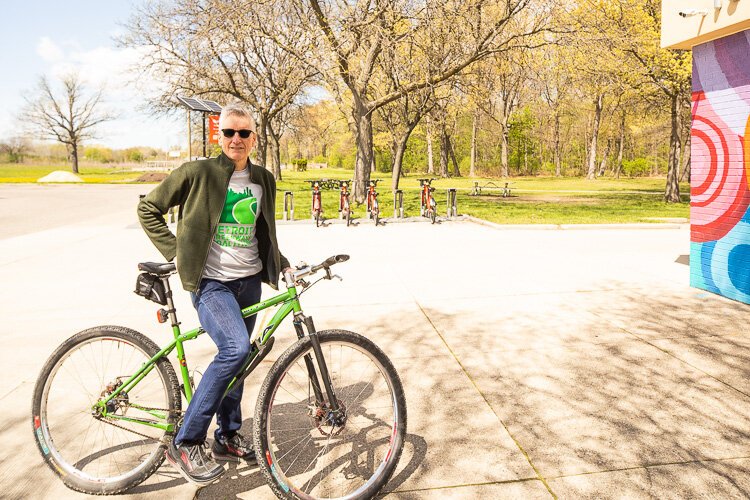
“I’ve been threatened,” says Scott. “I’ve had drivers come out of their cars and come at me, confront me for being on the road. It’s insane. I don’t understand it.”
The Ferndale-Pleasant Ridge proposal calls for giving the stretch of Woodward between the border of Detroit and I-696 a road diet, a lane-reducing procedure that’s known to slow traffic. Under the plan, one lane would be cut in both directions to make room for bike lanes on each side of the road and on-street parking. Bike lanes would be separated from motor vehicle traffic with the parking lanes or delineators. The road diet would also make pedestrian travel safer, by shortening the time it would take to cross Woodward Avenue.
Both Ferndale and Pleasant Ridge are due to have their sections of Woodward resurfaced by the Michigan Department of Transportation next year. They’ve applied for a Transportation Alternative Program grant through the state to help fund the road diet and bike lanes and are currently waiting to see whether the grant is approved.
Next steps
The pandemic has certainly been a time of increased bike use for Southeast Michigan. Those who’ve taken a trip to their local bike shop know how hard it’s been to find new bikes and in some cases even bike parts.
And with reduced options for social activities, local parks and trails have seen a lot more cyclists too. Trail usage of the Dequindre Cut is up four times now compared to what it was before the pandemic, according to Scott.
While the long-term impact the pandemic will have on bike infrastructure is still unclear, bike advocates like Scott are optimistic that people who’ve discovered bike lanes and trails over the last year will continue to use them. With fewer cars on the road, he also sees an opportunity to create temporary bike lanes that could become permanent. He’s also curious to see if the street closures cities like Detroit and Northville have implemented to accommodate outdoor dining during the pandemic will encourage local leaders to be more creative in regards to policies regarding street usage.
“It’s creating a lot of opportunities for people to think differently about public spaces,” says Scott. “I’m not confident that all the communities of Michigan are going to take advantage of this, but I think some of the key ones will.”
